In 1838 Kentford House, described as a brand new residence, was advertised for sale. The House was principally brick, with part stone build, comprising an entrance hall, dining room, drawing room, keeping room, large front kitchen and smaller back kitchen, pump store, store room and cellar. On the first floor there were 5 bedrooms, two of very large size and 3 smaller, while the second floor provided 4 further large bedrooms. The whole was set in 2 acres of ground which included extensive gardens, a stable yard, coach house and excellent double-slated stables. It was purchased by John Orbell, formerly of Bury St Edmunds.
1838-1842 John Orbell
John Orbell was one of the Capital Burgesses of the Corporation of Bury St Edmunds, serving as Alderman and Chief Magistrate in 1826 and 1827. On Saturday 16th July 1842 his wife, Deborah Ann Orbell, died at Kentford House aged 70. Within 3 months of her death John died in the same house on 15th October 1842.
For over 4 centuries racing has been staged in Newmarket, but how have the racecourses evolved from an initial starting point at Fleam Dyke Pumping Station, some 8 miles from the town, with a winning post barely 200 metres from the town centre, into two world recognized, excellent racecourses and a universal acceptance that Newmarket is the Headquarters of racing?
To access an interactive racecourse map showing over 50 individually named racecourses CLICK HERE. The map will enable you to:-
1. Determine when extended races over 8 miles, 6 miles and 4 miles began to be replaced by the courses now visited by thousands annually;
2. Consider how the challenge of crossing the Devil's Dyke was overcome;
3. Contemplate why the town no longer has a steeplechase course despite having at least 5 courses during the past 2 centuries;
4. Examine the practicalities of having up to 48 starting posts and winning posts;
5. Appreciate that it was not financially viable to have an open racecourse spread widely across the heath, with a finishing post barely 200 metres from the town centre;
6. Research how and why the Cambridgeshire Handicap has been contested over 3 different courses.
NOTE: The map does not make mention of 2 particular courses:-
(i) Sefton Course (also known as the Cambridge Road Course)
Source: 1970 Raceform.Used from 1959 to 1975.
(ii) New Circular Course
The Circular Handicap was run on Friday 29th October 1875 on the New Circular Course of about two miles.
Source: London Standard (30th October 1875): ''the horses started near the Turn of the Lands, ran back way of the Cambridgeshire Course towards the Ditch, and afterwards proceeded down the side of the Tan Gallop, and turned into the Rowley Mile near the Bretby Stakes starting post, finishing at the stand at the end of the flat. Except in the hollow near the Cambridgeshire start the runners should have been visible all the way if the sky had been bright and clear''.
Another report hoped that the Circular Handicap would become a feature in future programmes, as it would be contested in front of the new grandstand which would be completed in about a year and would be able to accommodate thousands.
(I am grateful to Tim Cox for bringing attention to these 2 courses.)
Enjoy researching the intriguing history of Newmarket and its many racecourses.
1865-1866 General Shirley, Tom Aldcroft
Although there is scant evidence that General Shirley lived at Kentford House for a prolonged period, he did lease it to Tom Aldcroft, but in early 1866 he sold the house to jockey Harry Grimshaw and his brother Jemmy with a view to Harry making it his main residence.
Early 1866-October 1866 Harry Grimshaw
Harry Grimshaw, born in Bolton on 7th April 1840, was a successful jockey who partnered the great Gladiateur to victory in the 1866 Ascot Gold Cup, but within 4 months he was dead. He made a name for himself by winning the 1859 Cambridgeshire on the 50/1 outsider Red Eagle, owned by John Osborne, going on to land the 1862 Portland Plate at Doncaster's St Leger meeting on Queen of Trumps 7/2 favourite. However, the pinnacle of his riding career was in the 1866 Ascot Gold Cup when Gladiatuer 2/5 fav coasted to victory. In early 1866 he purchased Kentford House from General Shirley in readiness for welcoming his new bride Annie, fourth daughter of the late John Osborne from Middleham. Grimshaw had ensured the place was newly decorated and furnished. On Wednesday 3rd October 1866 Harry rode Atalanta to victory in the Harleston Nursery Handicap at Northampton, after which he took a train to Cambridge on his way back to Kentford House where he resided. At Cambridge Station he was met by his manservant, Richard Nicholson, with his horse and trap, stopping for supper at the Eagle Hotel run by Mr Saunders. Grimshaw decided to take the reins of the trap, to which a horse called Titmouse was attached. Titmouse had won at the Craven meeting in 1863, later winning a Handicap Plate at Leamington. At the Paper Mills Toll Gate the manservant dismounted to pay the toll and open the gate, but the horse bolted, the trap turned upside down in a ditch with Grimshaw trapped underneath. Harry Grimshaw died at the scene of the accident.
1859 Cambridgeshire RED EAGLE 50/1 owned and trained by John Osborne and ridden by Harry Grimshaw
1862 Portland Plate at Doncaster QUEEN OF TRUMPS 7/2 fav owned by Mr C Rodgers and ridden by Harry Grimshaw
1866 Ascot Gold Cup GLADIATEUR 2/5 fav owned by Count Frederick de Lagrange, trained by Tom Jennings and ridden by Harry Grimshaw
1868-1870 Jimmy Waugh
James Waugh, born in Jedburgh, Scotland on 13th December 1831, began training in the 1850s at Stamford Hall, Gullane until persuaded by Mr Wybrow Robinson, an Australian, to move to England. James began training for Robinson at Russley Park, Lambourn, Berkshire, followed by a short period in Wiltshire before moving to Kentford House, Newmarket. In July 1871 James, and his wife Isabella, moved with their large family to Naklo, Poland, training for Count Hugo Graf Henckel von Donnersmarck. Just a year later, in 1872 he moved with the Count to Karlburg, Hungary where the Count had bought Castle Karlburg from the Zichy family, and James spent the next 8 years training in Eastern Europe, winning prestigious events like the 1878 Deutsches Derby in Hamburg with Oroszvar for Hugo Henckel senior when ridden by Tom Busby, and the 1881 Grosser Preis Von Baden at Baden Baden with La Gondola owned by T Festetics and ridden by Peasnall. In 1881 James and his family returned to England, initially living in Middleton Cottage before transferring a short distance to train at Meynell House, later called Hurworth House.
August 1871-September 1875 Francis Augustus Balchin
Francis Augustus Balchin, son of James, a racehorse trainer, was born at Carshalton on 29th August 1833 and destined for a life on the turf. He became apprentice to his father, and rode into his mid-20s though he had become very heavy for the Flat. He began to trainin 1853 and in January 1860 succeeded Ben Land as trainer to Mr George Hodgman. They had 32 horses at Warren House, Epsom, in 1864 and spent a year or two at Telscombe between 1868-1869. The pair parted company and Hodgman sold his horses in early 1871. In August 1871 Augustus (Gus) Balchin moved to Kentford House and stables as a public trainer with 13 horses and boxes for twenty. In December 1872 the stables were largely burnt down and Balchin lost seven of his horses including three of his own, though a dozen survived. He trained the winner of the 1873 Lincoln, though he was best known as a successful trainer of platers. Gus Balchin had a fair number of winners in his own colours. However, by the beginning of 1875, still at Kentford House, he was reduced to advertising for horses or a post as private trainer. That year he went on to the forfeit list for 19 guineas, remaining on it for many years. At the end of 1875 Kentford House, then owned by Mat Dawson, was bought by Captain Machell who laid down a steeplechase ground there, where James Jewitt was to train the Machell jumpers from the following year. In 1876 Balchin was paralysed by a stroke from which he never recovered.
1876-1880 Captain James Octavius Machell, James Jewitt
Captain James Octavius Machell, who was born at Etton Rectory near Beverley in Yorkshire on 5th December 1837, was educated at Rossall School in Lancashire before joining the army. After his posting to India he returned to the United Kingdom and was sent to The Curragh where he combined his army career with training horses. He was so successful that he captured the leading trainer title in Ireland in 1862. This success encouraged him to consider whether to continue to pursue his army career and training, leading him to the decision to resign his commission and take over stables in Newmarket. In 1864 he hit lucky, training the 3-year-old Bacchus to land the 200 Guineas Prince of Wales's Stakes at Newmarket over 1 mile on Monday 25th April 1864, beating Count Batthyany's Suburban, Count de Lagrange's Vivid and 21 others. On the back of that victory Bacchus was quoted at 14/1 to land the 1000 Guineas later in the week, although she did not take her place in that race. However, James Machell landed such a huge gamble on the 3-year-old filly that he was able to purchase Bedford Cottage Stables from William Butler, going on to hire George Bloss as his personal trainer. In January 1876 he purchased Kentford House, Kennet near Newmarket and installed James Jewitt as trainer until he moved to Bedford Cottage Stables.
January 1881-1886 Fred Webb
Frederick Edward Webb, born at Barham, Suffolk on 25th January 1853, was destined to become involved in the world of racing. He joined his uncle Thomas Brown at Graham House Stables, and then became apprentice to Matthew Dawson at Heath House Stables in 1863 aged just 10. He won the 1873 Epsom Derby aboard Doncaster (SR 2000) owned by James Merry, adding a further Classic, the 1881 2000 Guineas on Peregrine (SR 1947) owned by 1st Duke of Westminster. In January 1881 he took up residence at Kentford House, while later that same year he partnered The Scot in the Grand National, although the horse was unplaced behind Woodbrook 6/1 owned by Captain Kirkwood. He continued to reside at Kentford House until 1886, at which time he was replaced by the former jockey turned trainer Thomas Skelton.
1887-December 1890 Thomas Skelton
Thomas Skelton, born in Lichfield on 21st November 1856, was a successful jockey, particularly over the larger obstacles. He is reported to have won the 1886 Grand National on Old Joe, although many newspapers of the time and since, claimed that he was injured at the last minute and replaced by Tom Tagg. In 1887 he took up residence at Kentford House, replacing Fred Webb, while later that year he partnered Savoyard to victory in the Grand Sefton at Liverpool and the Lancashire Chase. Whilst at Kentford House he trained horses, having an agreement with Mr Abington (aka George Baird), to make use of fields adjacent to Kentford House, but owned by Baird, as gallops. He was involved in a shooting accident in Newmarket in 1890, and in December 1890 he moved out of Kentford House.
Samuel George Pickering, born in Toxteth, Liverpool in 1865, travelled to Newmarket to serve his training apprenticeship with James Jewitt before training in his own right in 1890 for Lord Rodney. A year later he moved to Kentford House Stables, owned by Lord Rosslyn. In a successful traing career lasting 37 years he trained the winners of almost every prestigious race, although a Classic winner eluded him. His list of owners was like a positive Who's Who of racing greats, including the Marquis of Londonderry, the Earl of Ellesmere, Lady Ludlow, Lord Cadogan, Lord Dewar, Captain Machell, Colonel McCalmont, Lord Rodney, Lord Rosslyn and Paul Nelke.
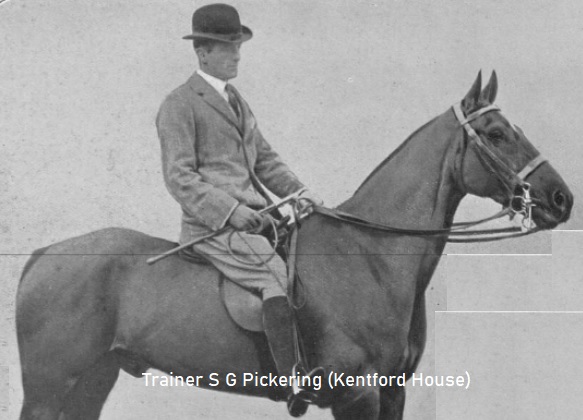
As a Liverpool man, born and bred, he was fond of the Aintree meeting, while his favourite race was the Liverpool Cup, which he won 4 times with China Cock alone, adding to his previous success with Buccaneer. He came closest to winning a Classic in 1920 when Lord Dewar's Abbot's Trace contested the Epsom Derby, yet it proved to be his most distressing failure. Abbot's Trace 33/1 lead the field well into the home straight, but stumbled and fell when holding a winning chance, leaving Major Giles Loder's Spion Kop (SR 1909) to claim victory. Abbot's Trace subsequently defeated Spion Kop at Derby racecourse over 1 mile 3 furlongs, and went on to win the Liverpool Summer Cup, Newmarket St Leger and Stockton St Leger. Indeed, in the 1921 Liverpool Cup Abbot's Trace broke the world record over 11 furlongs, recording a time of 2 minutes 15 seconds. One of his most loyal, and successful, owners was German financier Paul Nelke, born in Berlin in 1860. He owned China Cock, the winner of the Liverpool Cup on 4 occasions, and the 1914 Queen's Prize at Kempton. In the Summer of 1927 Samuel Pickering had just returned from a holiday in South America and felt unwell. He thought it was a heavy cold and insisted on travelling to the Liverpool Spring meeting, although he did agree to take his doctor with him. On his return to Kentford House he had influenza with complications, suffering a fatal stroke on Friday 3rd June 1927.
1892 City & Suburban Handicap BUCCANEER 20/1 owned by Lord Rosslyn, trained by S G Pickering and ridden by George Barrett
1892 Ascot Gold Cup BUCCANEER 1/2 fav owned by Lord Rosslyn, trained by S G Pickering and ridden by George Barrett
1892 Liverpool Cup BUCCANEER 9/4 owned by Lord Rossyln, trained by S G Pickering and ridden by George Barrett
1892 Jockey Club Cup BUCCANEER owned by Lord Rosslyn walked-over
1903 Great Tom Plate at Lincoln LITTLETON 7/1 owned by Mr W Low, trained by S G Pickering and ridden by Otto Madden
1903 Derby Gold Cup LITTLETON 10/1 owned by Mr W Low, trained by S G Pickering and ridden by McIntyre
1903 Final Plate at Manchester LITTLETON 8/11 fav owned by Mr W Low, trained by S G Pickering and ridden by Otto Madden
1905 Chester Cup IMARI 100/8 owned by Mr W Low, trained by S G Pickering and ridden by W Saxby
1908 Brighton Cup LAGOS 5/2 owned by Major J Edwards, trained by S G Pickering and ridden by W Saxby
1908 Lewes Handicap LAGOS 5/2 owned by Major J Edwards, trained by S G Pickering and ridden by W Saxby
1909 Acorn Stakes at Epsom YELLOW SLAVE 4/1 owned by Paul Nelke, trained by S G Pickering and ridden by W Saxby
1909 Goodwood Plate LAGOS 6/1 owned by Paul Nelke, trained by S G Pickering and ridden by W Higgs
1910 Alexandra Plate at Ascot LAGOS 5/1 owned by Paul Nelke, trained by S G Pickering and ridden by Bernard Dillon
1910 Jockey Club Cup LAGOS 5/1 owned by Paul Nelke, trained by S G Pickering and ridden by Danny Maher
1910 Great Metropolitan Handicap LAGOS 100/7 owned by Paul Nelke, trained by S G Pickering and ridden by Bernard Dillon
1912 Stewards Cup GOLDEN ROD 20/1 owned by Paul Nelke, trained by S G Pickering and ridden by Danny Maher
1913 Chester Vase CYLBA 8/1 owned by Lord Cadogan, trained by S G Pickering and ridden by Danny Maher
1913 Liverpool Autumn Cup CHINA COCK 20/1 owned by Paul Nelke, trained by S G Pickering and ridden by Morny Wing
1914 Lincoln Handicap OUTRAM 25/1 owned by Paul Nelke, trained by S G Pickering and ridden by R Stokes
1914 Liverpool Spring Cup CHINA COCK 8/1 owned by Paul Nelke, trained by S G Pickering and ridden by Morny Wing
1914 Liverpool Cup CHINA COCK owned by Paul Nelke, trained by S G Pickering and ridden by Steve Donoghue
1915 Liverpool Spring Cup CHINA COCK 7/2 owned by Paul Nelke, trained by S G Pickering and ridden by Morny Wing
1920 Derbyshire 3-year-old Plate ABBOT'S TRACE 4/1 owned by Lord Dewar, trained by S G Pickering and ridden by Steve Donoghue
1920 Newmarket St Leger ABBOT'S TRACE 4/1 owned by Lord Dewar, trained by S G Pickering and ridden by Steve Donoghue
1920 Stockton St Leger ABBOT'S TRACE owned by Lord Dewar, trained by S G Pickering and ridden by Steve Donoghue
1921 Liverpool Cup ABBOT'S TRACE 5/1 owned by Lord Dewar, trained by S G Pickering and ridden by Henri Jelliss
1925 Royal Hunt Cup COCKPIT 20/1 owned by Paul Nelke, trained by S G Pickering and ridden by Orme
1925 Stewards Cup DEFIANCE 20/1 owned by Paul Nelke, trained by S G Pickering and ridden by Dick Perryman
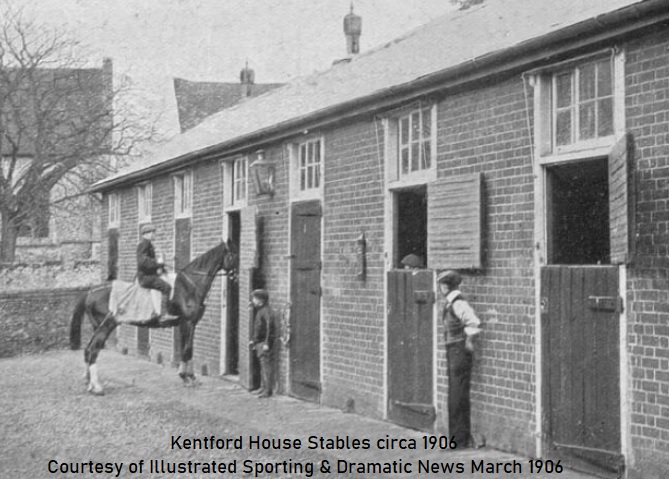
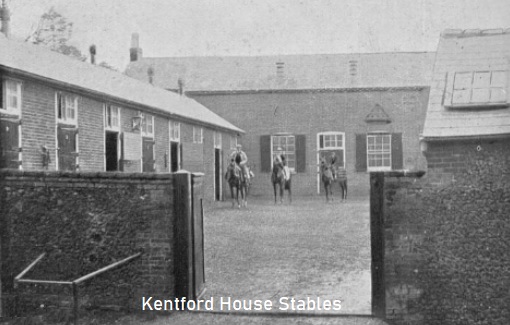
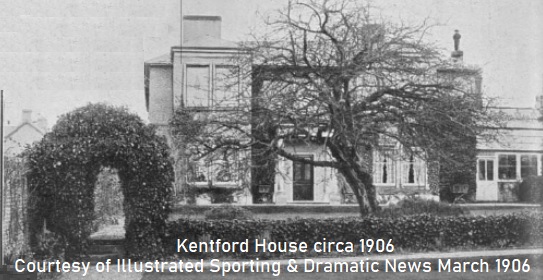
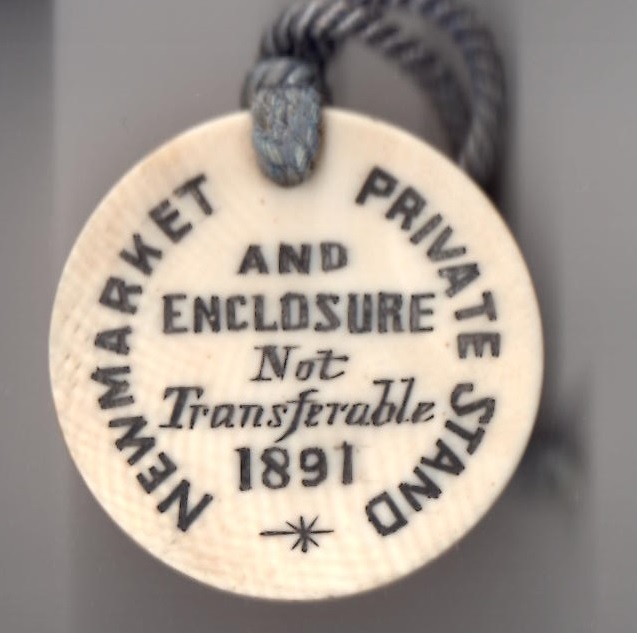
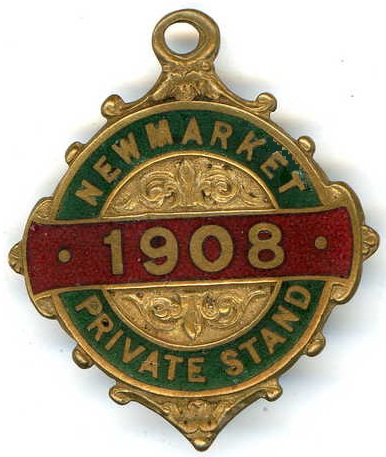
Herbert Goody, Second Head Lad
Herbert Goody was at Kentford House Stables from the age of 12 and could have joined as early as 1908 as a stableboy. He then helped the War effort in 1914, aged 18, and would have left the Army Veterinary Corp in 1919 and returned to Kentford House, living in Prospect Villa, which was a splendid place in those days and might well have housed a number of stablehands. The demob certificate shown below indicates that Herbert moved from London back to Newmarket in 1919. At that time Herbert would have been employed by Samuel Pickering, eventually reaching the position of Second Head Lad. In 1922 he clearly wanted to seek out employment in London, although what form that employment took is uncertain, but Douglas Pickering wrote him a reference and kindly stated that he had been in his employment for 14 years (i.e. from 1908 to 1922). As soon as he moved to London he got married and, by then Samuel Pickering's son, Douglas, had taken over the running of the stable, especially as Samuel was suffering from poor health. Douglas wrote to Herbert to thank him for his sterling work, to congratulate him on his marriage and to wish him well in the world of work outside of racing.
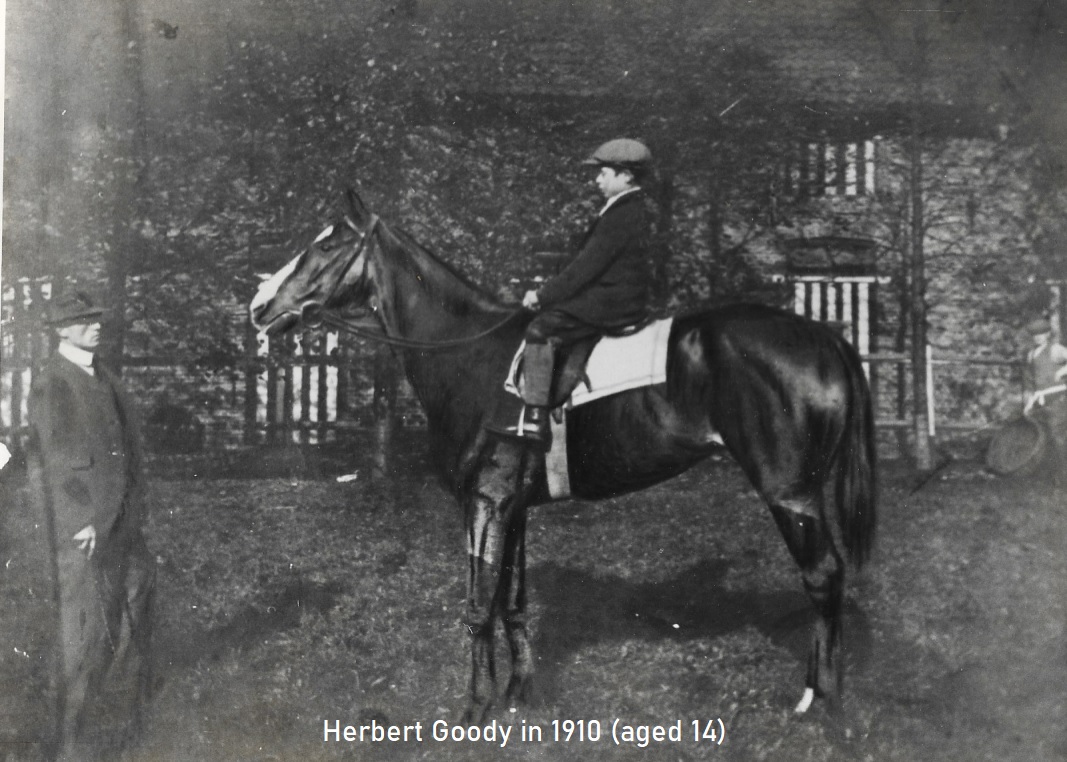
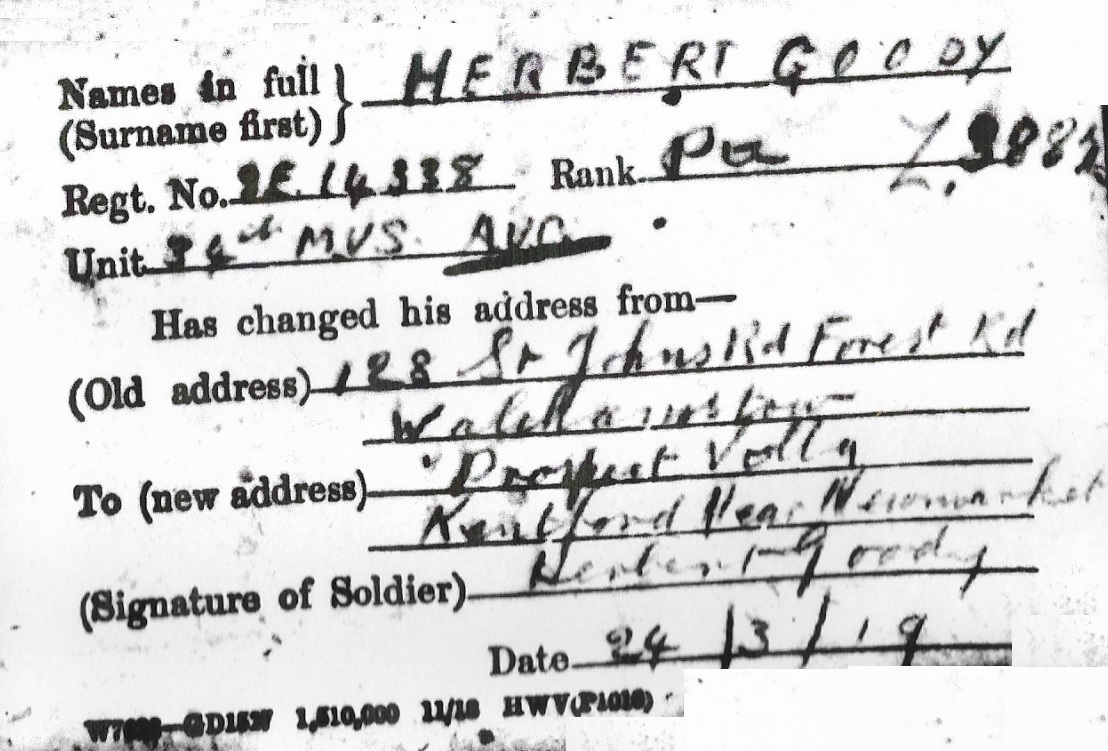
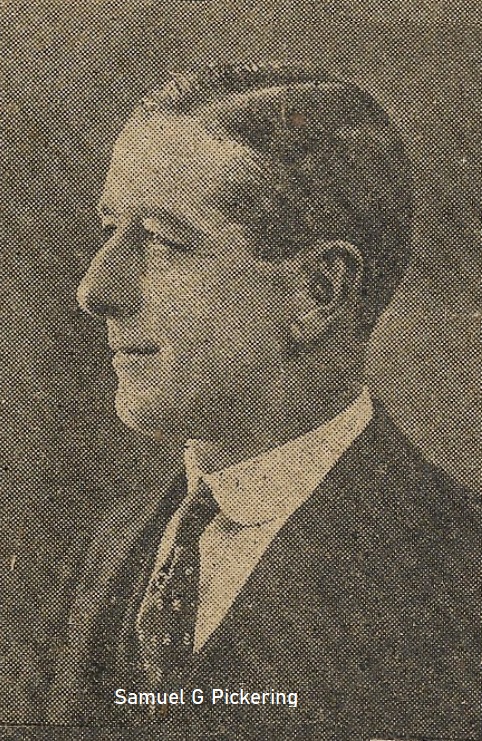
VELOCITY, a bay horse by Speed out of Ballast, was one of Sam Pickering's most successful horses before moving to P Peebles
1905 Cambridgeshire VELOCITY (7/2) owned by Mrs H V Jackson, trained by S G Pickering and ridden by A Templeman
1906 Doncaster Cup VELOCITY (7/4 fav) owned by Mrs H V Jackson, trained by P Peebles and ridden by Danny Maher
1907 Doncaster Cup VELOCITY (7/1) owned by Mrs H V Jackson, trained by P Peebles and ridden by Herbert Jones
1907 City & Suburban VELOCITY 6/1 owned by Mrs H V Jackson, trained by P Peebles and ridden by Herbert Jones
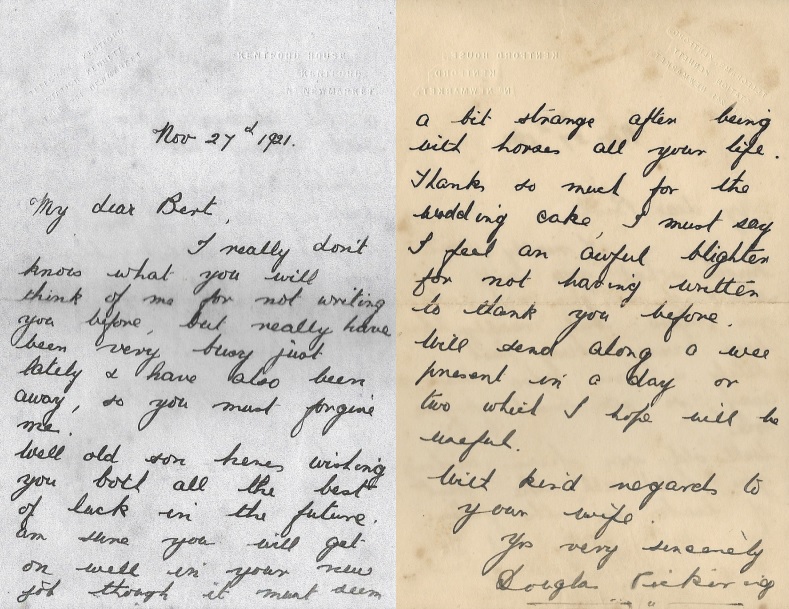
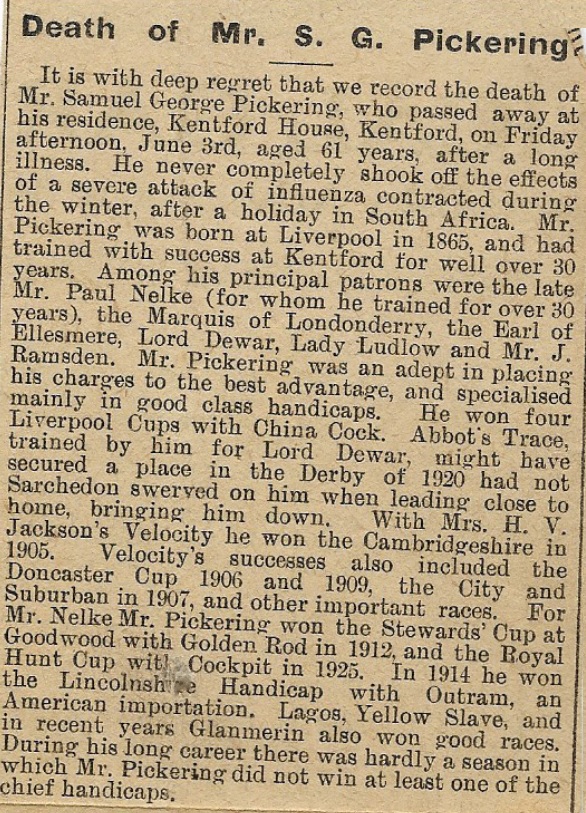
If anyone can provide further details of Hebert Goody and his time at Kentford House Stables then please email me.
1922-1932 Douglas Pickering
In the 5 year period leading up to the death of his father Sam in June 1927, Douglas took over the training at Kentford House, especially as his father suffered from poor health in this period. Douglas trained for Lord Ellesmere, Lord Lonsdale and Lord Dewar. In July 1932 Douglas announced that he would cease training, although he had no plans to relinquish his licence. The house reverted to his main residence.
CHINA COCK (1913-15 Liverpool Cup)
ABBOT'S TRACE (1920 Newmarket St Leger, Stockton St Leger, 1921 Liverpool Cup)
BUCCANEER (1899 Ascot Gold Cup, City & Suburban)
LAGOS (1910 Alexandra Plate, Jockey Club Cup, Great Metropolitan Handicap)
COCKPIT (1925 Royal Hunt Cup)



